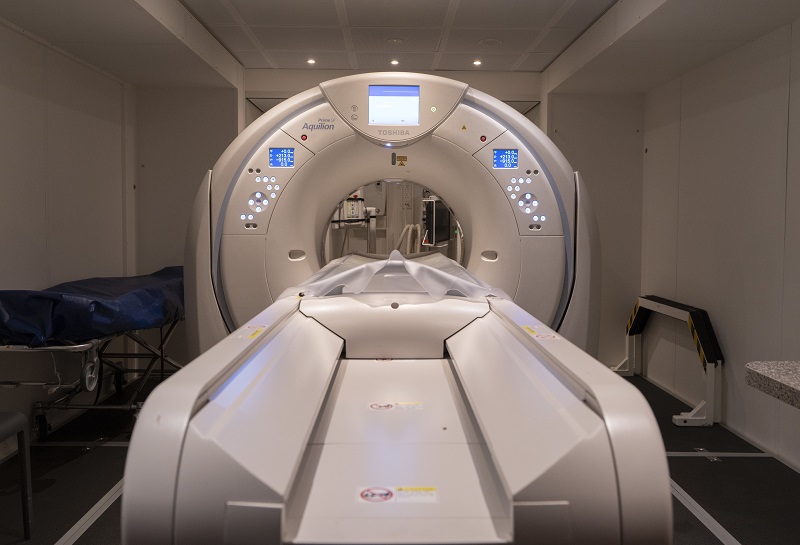The NHS Long-Term Plan was launched at the start of this year.
And, while a long-overdue boost to mental health services dominated headlines; there was relatively little attention given to perhaps the most-innovative step – a commitment to deploying more mobile lung CT scanners directly into community hubs.
Though it takes up a very-small section in the plan; its potential to save thousands of lives shouldn’t be underestimated.
“From 2019, we will deploy more mobile lung CT scanners – taking the support to people in supermarket carparks – starting in parts of the country with the lowest lung cancer survival rates,” the plan states.
Traditional application
This is the first time the NHS has outlined a commitment to utilising mobile healthcare facilities in this way.
By deploying to supermarket car parks, these test centres are putting themselves at the very heart of communities, in accessible locations where people live their day-to-day lives
Keith Austin, chief executive and founder of EMS Healthcare, said: “Traditionally, mobile medical units have been used to alleviate pressure when a hospital or trust is facing capacity issues, or to avoid disruptions to services when disaster strikes.
“At EMS Healthcare, we’ve seen trusts benefit from mobile units to facilitate vital chemotherapy, decontamination, ophthalmology, and renal dialysis services – to name a few.
Recently, the mobile unit manufacturer provided support to the University Hospitals of Leicester NHS Trust with a mobile decontamination unit for use while the trust centralised its endoscopy departments, resulting in minimal disruption to services.
“The value of mobile units in these situations is very much being realised,” said Austin.
“It is now about looking at how these units can be used more pro-actively and for entirely-new purposes.”
A fresh approach
What the NHS plan has highlighted is a desire to be more pro-active in disease prevention, working closely with local primary care services to identify high-risk patients earlier and take specialist diagnostic centres directly to them.
“This will facilitate early detection and, quite literally, save lives, as most diseases are far more treatable in their initial stages,” said Austin.
“By deploying to supermarket car parks, these test centres are putting themselves at the very heart of communities, in accessible locations where people live their day-to-day lives.
“This not only makes them easier to reach, but for many it makes going for treatment far less intimidating as they can head over to somewhere familiar, and undergo treatment in a purpose-built, comfortable environment.”
For primary care services, the benefits are huge, as they will experience next-to-no strain on capacity, while greatly expanding their capabilities - making a direct impact on areas that require their support the most.
Putting it into practice
EMS Healthcare is currently working on an initiative leading the way in this new approach – the Leeds Lung Health Check.
Part of a multi-million-pound investment by Yorkshire Cancer Research; the project aims to carry out lung health checks on more than 7,000 people thought to be at high risk of lung diseases such as cancer.
The means of carrying out these checks is a mobile medical unit fitted with a CT scanner, to make treatment as accessible as possible.
“In the past, we’ve seen the benefits of similar early detection campaigns, such as with Jo’s Cervical Cancer Trust on the Be Cervix Savvy roadshow”, said Austin.
“Travelling into the heart of communities at 16 different locations across the UK, the trust’s goal was to save lives by raising public awareness around cervical cancer, cervical screening and the cervix.
By adopting a pro-active approach that directly targets groups most at risk, there is no reason why we can’t significantly reduce inequalities in disease outcomes
“Targeting areas where cervical screening attendance was low, the campaign had a distinct and measurable impact, observing a sharp increase in calls regarding cervical screening as a result.”

EMS Healthcare is seeing increased interest in mobile facilities
Reducing inequality
He added: “New scientific research and advances in data analysis have made identifying groups at high risk of cancer and other diseases easier than ever. Marry that with the flexibility of mobile units and there is real opportunity to save thousands, if not millions, of lives.
“By adopting a pro-active approach that directly targets groups most at risk, there is no reason why we can’t significantly reduce inequalities in disease outcomes.
“We should now be looking towards how we can apply this approach to similar problem areas.
“There are a large number of other diseases that could benefit greatly from a pro-active approach that is grounded in patient accessibility. And the sooner this is realised, the greater impact on patient outcomes.




